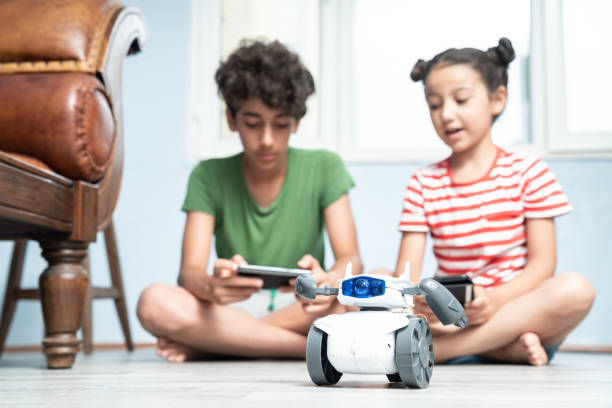I’m a nerd. As a geek, my favorite tech toys are the ones I own. Over time, I’ve found that toys have become more difficult to understand.
Modern toys can resemble sophisticated devices. There are walking toys, flying toys, and roving toys. Some require “configuring,” “connecting,” or similar.
As manufacturers continue to produce products such as drones designed for children and toys with hidden nanny cameras, the line between a toy and a gadget becomes more blurred.
Manufacturers have improved their game with many complex and often over-engineered items.
Why is this happening?
Tech is expensive
Two significant elements dominate the design of toys today. Smarts and rapid manufacturing are the keys.
Modern toys have a high level of intelligence. It can control a toy’s action or have it react to input in real-time feedback and interaction, making it seem “smarter.”
The falling cost of technology makes this possible.
It was once uneconomical to place a microcontroller, a single-chip microprocessor, inside a child’s toy.
They’re not expensive anymore, only a few dollars. And they offer significant computing power.
Microcontrollers often have WiFi and Bluetooth capabilities. It allows “connected toys” to access many internet services or be controlled by a phone.
The rise of prototyping technologies such as 3D modeling, 3D printing, and low-cost CNC (computer numerical controlled) milling has also been a boon to the toy industry.
This technology allows for the advanced modeling of toys which can make them “tougher.”
The case can be made from various materials, allowing for a more complex design.
Some examples include advanced surface textures and internal structures that support shock absorption to protect internal components such as wheel suspensions on toy cars.
Robot dogs and bot helpers
Automatons or self-operating machines are a favorite amongst many toys.
One magic element that makes us attach feelings to toys is that we believe inanimate objects are “thinking.”
Manufacturers know this, and some toys are designed to create emotional attachment. One of my favorite examples is the artificially intelligent Anki vector, which roams around.
The Vector is equipped with sensors and internet connectivity to interact with you and your surroundings. It even is integrated with Amazon Alexa.
Sony’s Aibo is another sophisticated toy. This robot pet demonstrates how microelectronics and advanced robotics can be combined with sensors, actuators, and programming to create an emotional toy.
Screens are not included.
Toy makers are also taking advantage of the growth in smartphones and portable computing.
The remote control of quadcopters and similar devices does not always need a display since video can be sent to an external device.
Some toys use the smartphone as the sole control interface to control the toy, usually through an app. This saves manufacturers the cost of providing the most expensive component of the toy.
A smartphone is a requirement for the toy.
It would be unpleasant to purchase a new, fantastic toy only to discover that you do not own the expensive device needed to use it.
I’m sure that my toys don’t spy on me.
There have been reports of talking dolls that record conversations in the home.
Smart-home assistants like Amazon Alexa and Apple’s Siri store your voice recordings in the cloud.
The same concerns may also apply to toys like the Vector and Aibo.
Privacy concerns can arise from anything with a wireless connection, a camera, or a microphone.
Toys for the Future
Does that mean toys are getting better or more sophisticated?
According to reports, AI and machine learning (AI) will be prevalent in our daily lives in 2020.
This could make buying toys even more difficult than it is now. Shoppers can take into consideration a few factors.
The type of battery, the number required by a particular toy, and how to charge the batteries are at the top of my concerns list.
Can a device with built-in lithium batteries be replaced easily? If the toy was designed for outdoor use, would it withstand the heat? Most lithium-ion batteries degrade quickly in hot environments.
Does the device need an additional screen, a smartphone, or both?
You should also be aware of the personal information required for signing up for a service associated with a particular toy. Also, you should check if the toy will still work if the manufacturer ceases to exist or if the company goes bankrupt.

